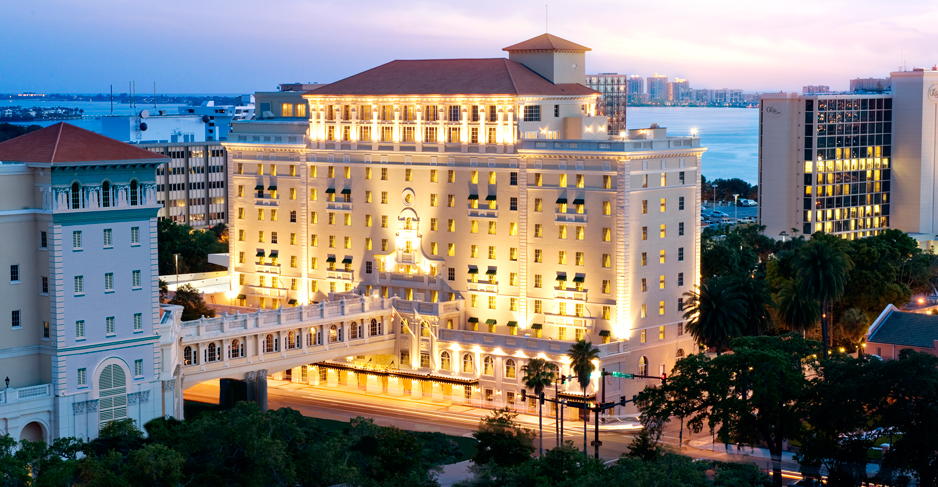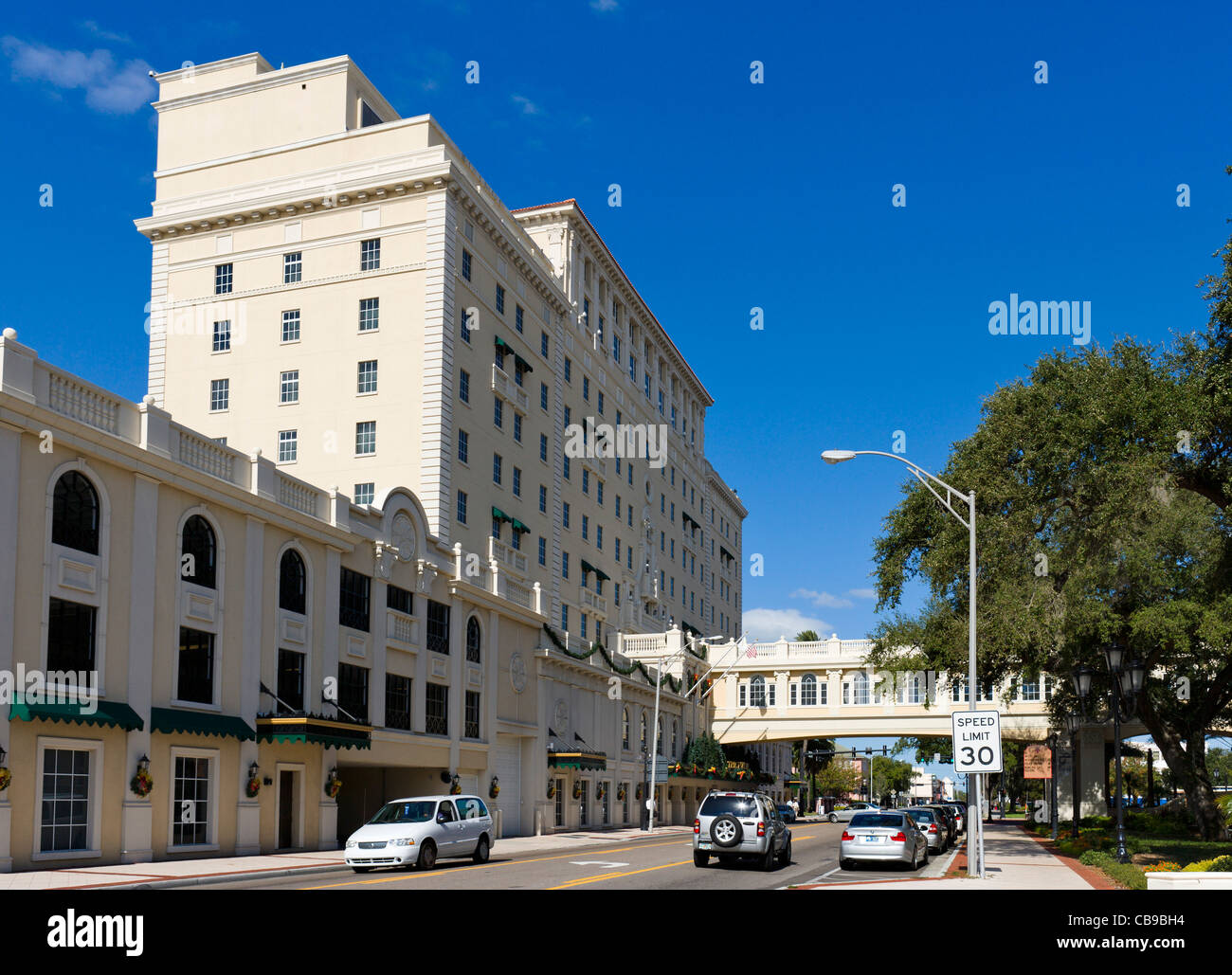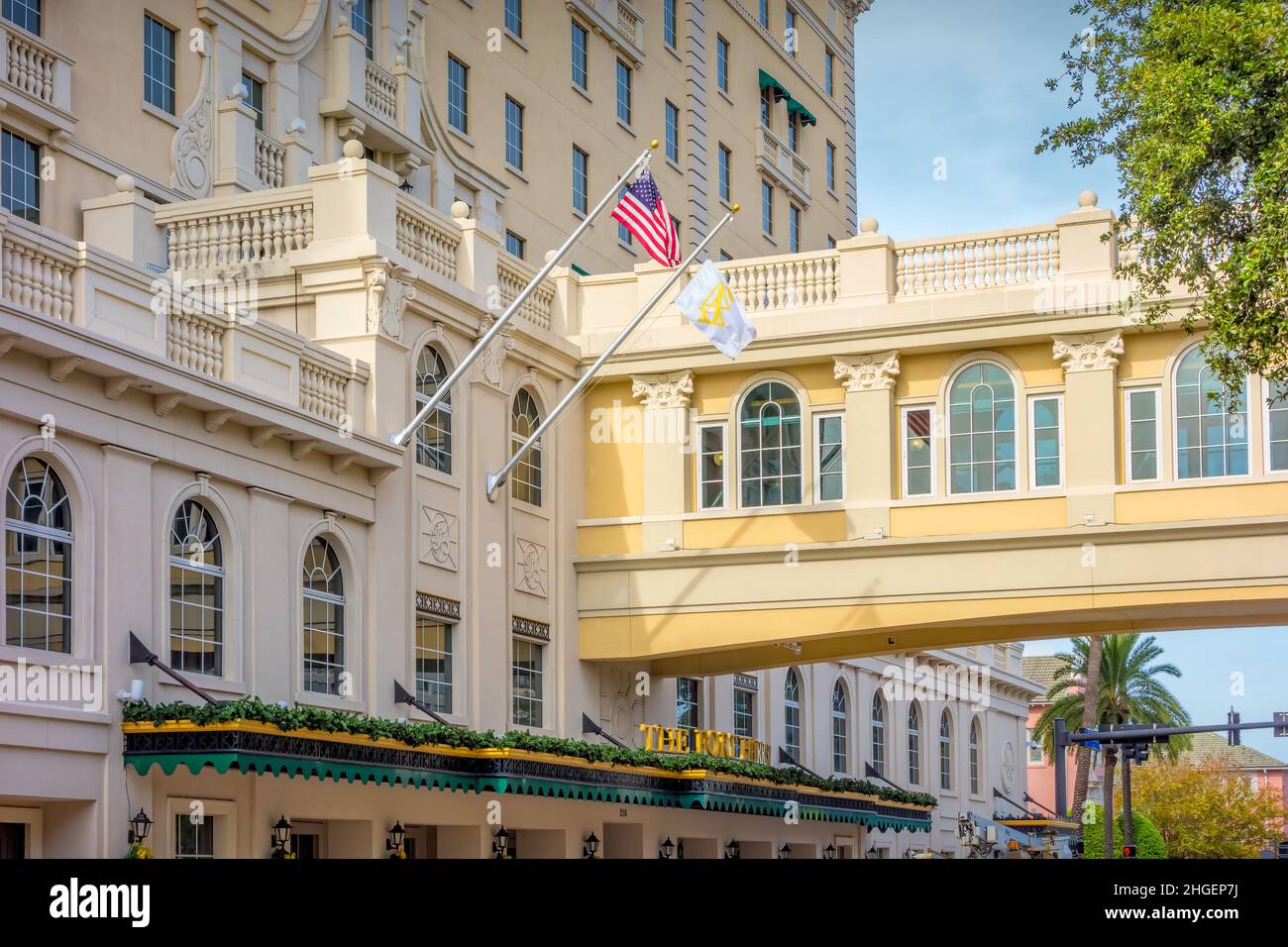
The Shifting Identity of Fort Harrison, Florida: From Military Outpost to Spiritual Mecca
Clearwater, Florida, a city famed for its pristine white-sand beaches and sun-drenched Gulf Coast charm, holds within its vibrant downtown core a landmark whose identity has been forged, reimagined, and reasserted through distinct eras of American history. This is Fort Harrison, a name that evokes images of frontier conflict, Gilded Age opulence, and, most recently, the spiritual epicenter of a global movement. Far more than just a street name or a building, Fort Harrison represents a layered narrative of conquest, commerce, and creed, offering a fascinating glimpse into Florida’s ever-evolving character.
Today, when most locals or visitors hear "Fort Harrison," their minds invariably turn to the imposing, meticulously maintained buildings that dominate downtown Clearwater, particularly the Church of Scientology’s Flag Land Base. This sprawling campus, centered around the iconic Flag Building and the Fort Harrison Hotel, serves as the international spiritual headquarters for Scientologists worldwide, drawing adherents from every corner of the globe for advanced auditing and training. It is a place of profound significance for its community, a meticulously managed island of intense activity within the bustling coastal city.
Yet, this modern reality is but the latest chapter in a story that began nearly two centuries ago, in a vastly different Florida. The original Fort Harrison was not a hotel, nor a spiritual retreat, but a rough-hewn military outpost established during the tumultuous era of the Seminole Wars.

The Frontier Fort: A Relic of Conflict
The name "Fort Harrison" first appeared on maps and in military dispatches during the Second Seminole War (1835-1842), one of the longest and costliest Indian wars in U.S. history. As American settlers pushed deeper into Florida, clashing with the indigenous Seminole people who fiercely resisted removal from their ancestral lands, a series of forts were erected across the peninsula. These outposts, often little more than palisaded log structures and rough cabins, served as strategic points for troops, supply depots, and refuges for settlers.
The precise location and detailed history of the original Fort Harrison are somewhat elusive, a common challenge with many temporary frontier fortifications. Historians suggest it was likely situated somewhere along the high ground near Clearwater Harbor, offering a vantage point over the strategic waterways and preventing Seminole raids. It would have been a harsh, desolate posting for soldiers, battling not only the Seminole warriors but also the relentless heat, humidity, and disease of the Florida wilderness. Life at Fort Harrison would have been defined by vigilance, the constant threat of ambush, and the sheer monotony of frontier duty.
This early fort, like many of its contemporaries, was eventually abandoned as the Seminole Wars drew to a close and the frontier moved further south. Its physical structures likely decayed back into the landscape, leaving little trace. However, the name endured, a testament to its brief but significant role in shaping the nascent American presence in Florida. This historical ghost, the name "Fort Harrison," would eventually be resurrected for an entirely different purpose, marking a new era for the region.
The Grand Hotel: A Beacon of Tourism
As the 19th century gave way to the 20th, Florida transformed from a rugged frontier into a burgeoning tourist destination. Visionary developers, drawn by the state’s mild winters and natural beauty, began to construct grand hotels that catered to wealthy Northerners seeking respite from harsh climates. Clearwater, with its stunning beaches and picturesque harbor, was ripe for this transformation.
In 1926, at the height of Florida’s land boom, the magnificent Fort Harrison Hotel opened its doors. This was not merely a building but a statement, an architectural jewel designed by the prominent firm of Franklin O. Adams Jr. & Company. Rising eight stories above the downtown waterfront, the hotel was a paragon of Mediterranean Revival style, featuring elegant arches, expansive verandas, and a commanding view of Clearwater Harbor. It quickly became the social hub of the city, a place where dignitaries, celebrities, and affluent families gathered.
The Fort Harrison Hotel boasted 250 guest rooms, a lavish ballroom, fine dining establishments, and amenities that were considered cutting-edge for its time. It symbolized Clearwater’s aspiration to become a premier resort town, rivaling the likes of St. Petersburg and Sarasota. For decades, it hosted countless weddings, conventions, and community events, becoming deeply woven into the fabric of local life. Generations of Clearwater residents celebrated milestones within its walls, creating memories that would forever link the hotel to the city’s golden age of tourism.

However, like many grand dames of the past, the Fort Harrison Hotel eventually faced challenges. The post-World War II era brought shifts in travel patterns, the rise of motels, and the decline of single-destination, long-stay vacations. The hotel, despite its historic charm, began to lose its luster, struggling to compete with newer, more modern accommodations. By the 1970s, it had fallen into disrepair, a shadow of its former glory, reflecting a broader malaise in downtown Clearwater. Its future was uncertain, and many wondered if this once-proud landmark would simply fade into obscurity or face the wrecking ball.
The Spiritual Epicenter: Scientology’s Flag Land Base
The third and most dramatic transformation of Fort Harrison began in 1975 when the Church of Scientology, under the direction of its founder, L. Ron Hubbard, purchased the ailing Fort Harrison Hotel. This acquisition marked a pivotal moment not only for the building but for Clearwater itself. Hubbard had envisioned a global spiritual headquarters, a place where Scientologists could come for the most advanced levels of auditing and training, and the Fort Harrison Hotel, with its commanding presence and ample space, was deemed ideal.
Over the ensuing decades, the Church of Scientology embarked on an ambitious program of acquisition and renovation in downtown Clearwater. The Fort Harrison Hotel, meticulously restored to its former grandeur and beyond, became the centerpiece of what is now known as the Flag Land Base. This is not just a hotel in the conventional sense; it serves as a crucial facility for Scientologists pursuing advanced spiritual services. Guests, primarily Sea Org members (the Church’s religious order) and dedicated Scientologists from around the world, stay there while undergoing intensive courses and auditing sessions.
The Flag Land Base has grown exponentially around the Fort Harrison Hotel. The most striking addition is the Flag Building, also known as the "Super Power Building," an architectural marvel of modern design completed in 2013. This massive, seven-story structure, with its distinctive blue glass and intricate interiors, is dedicated to advanced spiritual technology and houses specialized facilities for Scientologists to progress up "The Bridge to Total Freedom." These facilities include a "Perceptic Processing" area designed to enhance an individual’s 57 senses (according to Scientology teachings), and training rooms for various levels of auditing.
The Church’s presence has profoundly reshaped downtown Clearwater. Block after block of property has been acquired, renovated, and developed by Scientology-affiliated entities. For Scientologists, Clearwater is a sacred space, a spiritual mecca where they can achieve higher states of awareness. They often refer to the Fort Harrison Hotel as "the ultimate spiritual retreat," a place of profound personal transformation. The sheer scale of the Church’s investment and the constant influx of its members have created a unique economic and social ecosystem within the city.
Impact and Perceptions: Two Clearwaters?
The extensive presence of the Church of Scientology has, inevitably, generated a complex and often polarized dynamic in Clearwater. On one hand, the Church is a major property owner and employer, responsible for the meticulous upkeep of numerous historic buildings and injecting a steady stream of visitors into the local economy. Its members, often dressed in formal attire, are a visible and constant presence in the downtown area.
For many long-term residents and local businesses, however, the relationship is nuanced. There’s a perception among some that downtown Clearwater, particularly around the Flag Land Base, has become insular, catering primarily to Scientologists rather than the broader public. While the Church maintains that its facilities are open to all for informational purposes, the intense focus on its internal community can make the downtown core feel distinct from the more tourist-oriented beach areas. "It’s like two different cities," one local shop owner was quoted as saying in a regional newspaper, "there’s beach Clearwater, and then there’s downtown Clearwater."
The Church’s expansion has also been met with scrutiny and controversy over the years, stemming from its practices, finances, and relationships with former members. While the Church vigorously defends its actions and its right to religious freedom, these controversies have contributed to the complex public perception of Fort Harrison and its current custodians.
Conclusion: A Legacy Enduring
From a crude military outpost in a wild frontier, to a lavish resort symbolizing a new era of tourism, to the spiritual heart of a global religion, Fort Harrison has witnessed and embodied the dramatic shifts in Florida’s identity. Its name, once a marker of conflict, became synonymous with luxury, and now, with spiritual enlightenment for a dedicated community.
The story of Fort Harrison is a powerful illustration of how places evolve, how their meaning can be redefined by successive generations, and how a name can persist even as its essence transforms. Today, standing before the imposing Flag Building or the meticulously restored Fort Harrison Hotel, one is not just looking at a modern structure. One is gazing upon a palimpsest of history, where the echoes of Seminole warriors, the laughter of Gilded Age vacationers, and the earnest pursuit of spiritual freedom all converge, making Fort Harrison, Florida, a truly unique and compelling landmark in the Sunshine State. Its future, like its past, promises to be nothing short of remarkable.


